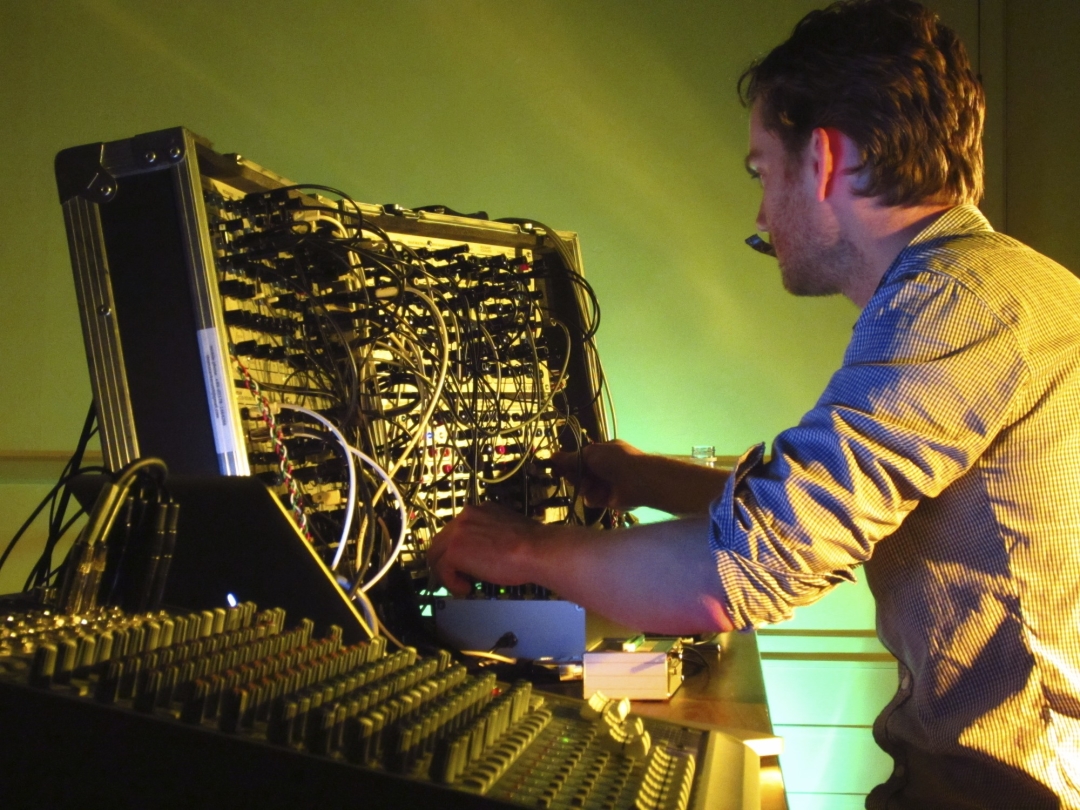Thomas Ankersmit salutes the pioneering electronic work of Dick Raaijmakers and advances his own work in the process
Thomas Ankersmit
In recent years the Berlin-based Dutch sound artist Thomas Ankersmit has found recurring inspiration by looking back to early pioneers of electronic music to energize his own work, studying and adapting innovations of his often overlooked predecessors to create visceral new music. In the coming year or he plans to collaborate with Phill Niblock and unveil a solo project based on the singular research of Maryanne Amacher.
In September he released a dazzling electronic composition called Homage to Dick Raaijmakers (Shelter Press) that explicitly embraces the legacy of the titular Dutch composer. The 35-minute work both represents an impressive advance on his own output, while casting a welcome spotlight on its honoree. After engaging with his pieces numerous times this week I went back into the deeply satisfying box set released in 2000, The Complete Tape Music of Dick Raaijmakers (Basta), and was stunned by its lacerating bite, compositional flow, and timbral timelessness. While lots of pioneering electronic music from five decades ago sounds dated, encumbered by now-quaint technological developments of the time, the music of Raaijmakers sounds utterly fresh. During the 60s he worked out a variety of Dutch studios in Eindhoven, Utrecht, and the Hague, first attempting to create electronic pop music before delving into more bracingly abstract terrain. His 1960 piece "Pianoforte," for example, adapts sounds recorded inside of a piano while it was being played with hall of mirrors tape manipulations. He soon began working intensely with synthesis, and something like his "Canon" series (1964-67) boggles the mind with its meticulously plotted, often percussive skitters of white noise, sizzling static, reverb explosion, and opera samples. Below you can check out the first of those "Canon" pieces, "Super Augere" from 1964.
Ankersmit’s piece, made with a Serge synthesizer—a machine he’s used often in recent years—applying various filters, modulators, and sine generators to stretch out some of the ideas of Raaijmakers into an extended excursion through shifting terrain. Grey, grizzled abstractions suggest natural phenomenon like thunderclaps, downpours, and wind gusts, as well as elliptical radio signals—the noise between stations and direct transmissions mucked up by electric disturbances—all cobbled together in a sweeping journey of viscous physicality and crackling vitality. Regardless of the real-world sounds the piece might suggest, Ankersmit decidedly celebrates the sonic translation of electricity. “Homage” wends its way through organic peaks and valleys, occasionally producing other sounds by dragging a contact mike across his gear. The end result relies additionally upon psychoacoustic phenomenon that utilizes the ears of the listener as a kind of prism, with those hearing organs naturally extracting new frequencies not present in Ankersmit’s actual piece, which is why the composer requests that playback occur on loudspeakers rather than headphones, which stifle such activity. The effort represents a fertile area of exploration for Ankersmit, revisiting ideas developed by others decades ago and illustrating their ongoing potency. You can check out the entire piece below.
Today’s playlist:
Hypnotic Brass Ensemble, Book of Sound (Honest Jon’s)
Cristián Alvear, Manfred Werder: Stück 1998 (Irritable Hedgehog)
Various artists, Fanafody: A Collection of Recordings and Photographs From Madagasikara Volume II (Cultural Knot/Mississippi)
Nisse Sandström Quintet, Live at Crescendo (Moserobie)
Stefano Scodanibbio, Voyage That Never Ends (New Albion)




